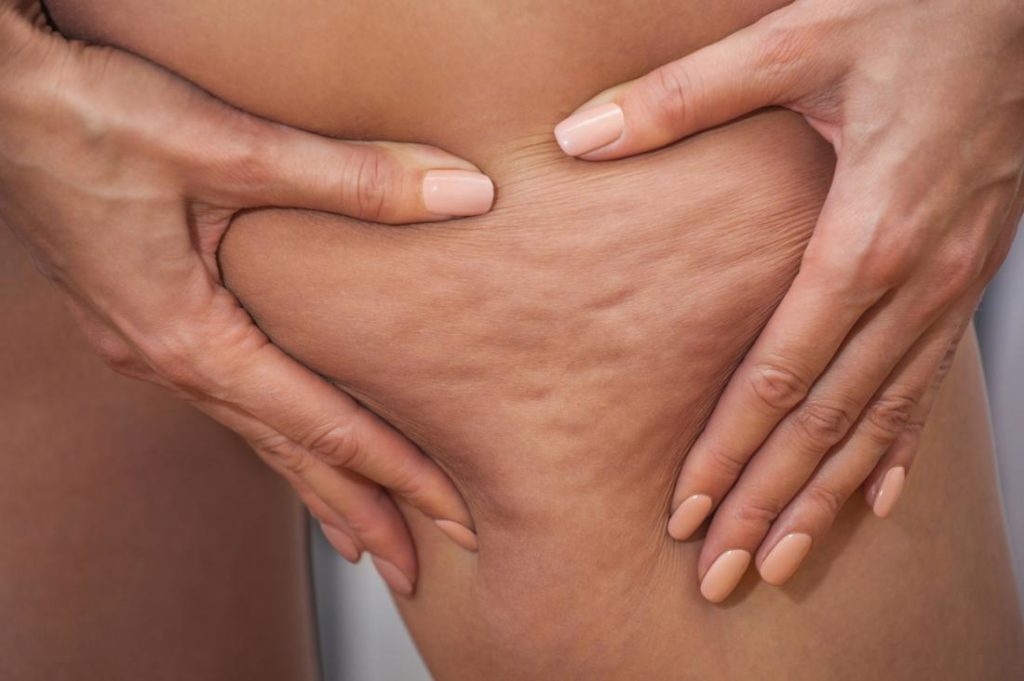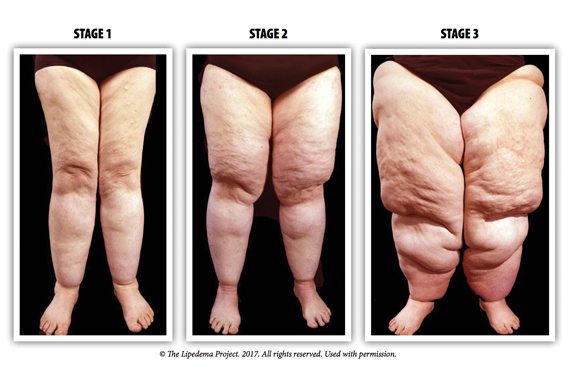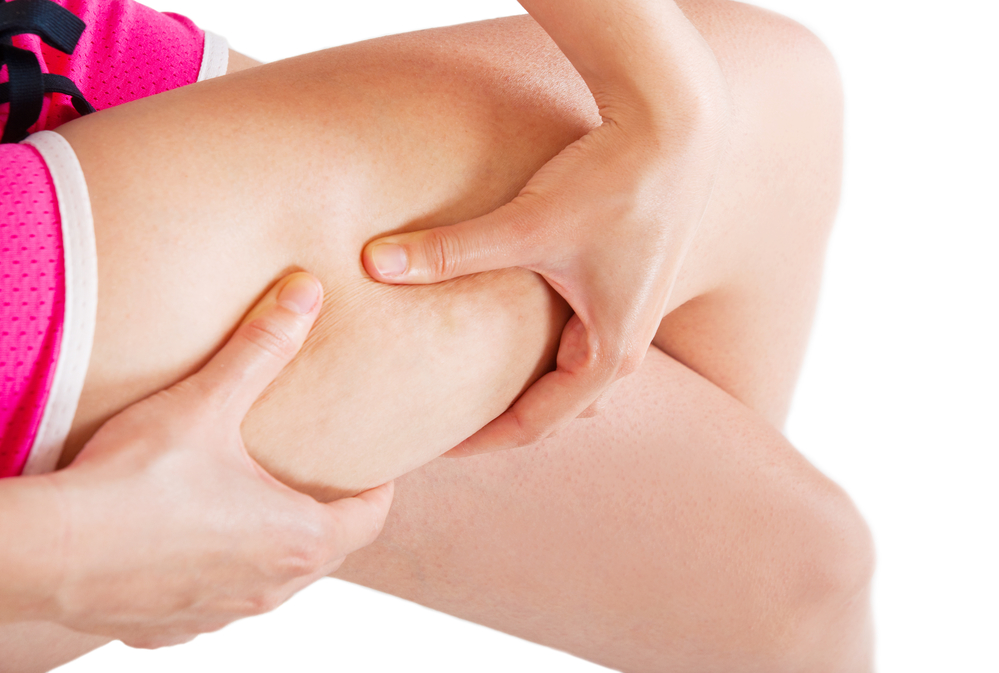Losing weight is rarely a bad thing. Losing those unwanted pounds can have a significant impact on how you look and feel. You’ll have more energy, be less prone to illness, and feel better about yourself. However, and even if you lose weight, you may still experience cellulite or lipedema.
What is cellulite?

Do you have lumpy, uneven skin on your thighs, hips, or buttocks? Does your skin have an orange peel appearance? Despite having lost weight, do these symptoms persist? You may be suffering from cellulite.
Cellulite is caused by an accumulation of fat directly under the skin. It occurs when the skin is pulled downward toward the fat cells, which produces that very recognizable dimpled appearance.
Factors that may trigger cellulite or make it worse include:
- Hormones – estrogen, the primary female hormone, promotes fat storage around the hips and thighs, the very areas most susceptible to cellulite. Because of this, cellulite affects 80-90 percent of women and rarely affects men.
- Poor diet – an unhealthy diet contains a lot of toxins. Many of those toxins end up being stored within your body fat. Accumulated toxins may affect the appearance of fat cells.
- Smoking – like an unhealthy diet, smoking overloads your body with toxins. Those toxins can accumulate in your fat cells.
- Genetics – some women, and a small number of men are genetically predisposed to cellulite.
- Weight gain – gaining weight is often accompanied by an increase in cellulite.
- Sedentary lifestyle – general inactivity and a lack of exercise may increase the chances of developing cellulite. This is mainly due to sluggish circulation, poor muscle tone, and lack of lymphatic drainage. This is especially true for people who spend a lot of time sat down.
- Pregnancy – pregnancy is accompanied by weight gain, hormone fluctuations, and changes in activity levels, all of which can contribute to cellulite.
- Aging – cellulite often gets worse with age. This is due to a reduction in the elasticity of the skin. Less elastic skin is more easily pulled inward toward the fat cells.
Cellulite treatment
There are lots of supposedly-effective treatments for cellulite, from special creams to anti-cellulite massage to wraps, but many of these treatments do not live up to their advertised results. Thankfully, several home remedies can be effective. They include:
Topical creams and lotions – some creams and lotions can reduce the appearance of cellulite, but only temporarily. Products containing retinol increase skin strength and elasticity, which helps prevent the skin from being pulled in toward the fat cells. This is especially useful for older sufferers of cellulite.
Other products contain caffeine, which increases blood flow and acts as a local diuretic. This changes the water content of the fat and may reduce the appearance of cellulite.
Collagen – studies have shown that daily consumption of a hydrolyzed collagen peptide over a 3-6 month period can help boost internal collagen production helping to restore and repair the elasticity of skin and reduce the appearance of cellulite significantly.
Exercise – working out will help reduce your body fat percentage and strengthen your muscles, both of which will help make cellulite less noticeable. Exercise also increases circulation and can help your body rid itself of the toxins that may make cellulite worse.
Dry brushing – said to stimulate circulation temporarily and the flow of lymph, dry brushing may help detoxify your fat cells, leading to less cellulite. Using a body brush or loofah, simply brush the affected area upward against the normal direction of gravity. This is best done before showering or bathing.
Coffee grounds – you can use coffee grounds as an exfoliant and also an alternative to often expensive anti-cellulite creams. Use on their own or mix your grounds with olive or coconut oil. Massage the affected area for 10 minutes and then rinse. This at-home treatment may reduce bumpiness, stimulate blood circulation, and promote lymph flow.
Increase hydration – the supermodels skin-care secret, drinking more water may help reduce or even prevent cellulite. Your body uses water to wash away toxins. In addition, too little water will reduce skin elasticity. Drink at least 64 ounces of plain water per day.
Lifestyle changes – high-sugar foods, smoking, sedentarism, excess alcohol consumption, and not eating enough healthy food can all make cellulite worse. Your skin is the largest organ in your body and mirrors your internal health. If you want healthy-looking, cellulite-free skin, a healthy lifestyle will undoubtedly help.
What is lipedema?

Lipedema is the abnormal buildup of fat cells in the legs, thighs, buttocks, and it can also affect the arms. This causes an increase in size in the affected area, although it doesn’t usually extend to the feet of hands. This creates a bracelet or anklet appearance as the enlargement stops just above the extremities.
Although this condition is more common in overweight people, weight loss does not tend to reduce the size of the area affected by lipedema. Because of this, it is possible to have lipedema in the legs or arms, but for the rest of the body to be relatively slim. Lipedema has no known cause, but genetics and hormonal imbalances may be a contributing factor.
Lipedema is often accompanied by lymphedema. This is water retention that makes the swelling worse, especially towards the end of the day. Lymphedema tends to improve overnight while lipedema is more constant. Like cellulite, lipedema is much more common in women and is very rare in men.
As well as becoming enlarged, affected areas of the body may:
- Feel soft and cold
- Bruise easily
- Feel painful, tender, or ache
- Have small broken veins beneath the skin
Lipedema treatment
Lipedema can be hard to treat, mainly because the cause is mostly unknown, and it is not purely an issue of diet and exercise. That said, the following are considered to be ways that may help reduce or control lipedema.
Compression therapy – wearing compression tights or arms sleeves may help improve fluid drainage to reduce swelling.
Exercise – not for weight loss purposes, although that may be beneficial, but to increase circulation and encourage the movement of fluid and lymph from the affected area. Low-impact exercise is best, such as swimming, walking, or cycling.
Massage – massage increases circulation, which will remove excess fluid from the affected area.
Liposuction – liposuction is the only medially-recognized treatment for lipedema. With liposuction, the affected fat cells are removed surgically. While the fat cells may return, this is the only way to “cure” lipedema.
Which do I have?
Cellulite and lipedema are two very different conditions, and it should be fairly evident if you have one of the other.
With cellulite, the skin of the thighs, hips, and buttocks looks dimpled and takes on an “orange peel” appearance. Cellulite can affect you even if you are slim and usually responds well to diet and lifestyle changes. Cellulite, while it can be distressing or cause embarrassment, does not affect your health.
In contrast, lipedema is usually characterized by swelling of the affected limbs and is caused by abnormal fat cells. It is much harder to treat, and it does not usually respond to changes in diet or lifestyle. Lipedema can affect mobility and may require medical intervention because sufferers may develop lymphatic system problems.


1 Response to "The Difference Between Cellulite & Lipedema"
I just found out about this and have struggled with this since I was in High School and I am 56 now.
I need some serious help!